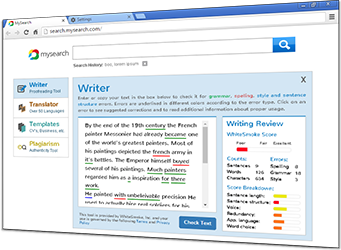Positive Business Writing Techniques
Business writing requires a different approach to structure and style than other types of correspondence. Whether you are writing cover letters; advertisements, brochures, client correspondence, or sales reports, following positive business writing techniques will enhance your documents. These techniques will create clear and to-the-point material over a wide range of scenarios.
English writing software like WhiteSmoke helps to provide immediate feedback on sentence structure, grammar, and punctuation. When writing any type of communication within a business environment, certain skills are necessary to create letters that generate results. A few of the most important writing tips and techniques for businesspersons to remember include but are not limited to:
- Say what you mean and mean what you say.
- Keep it brief - use short sentences.
- Get to the point as quickly as possible.
- Double-check for grammatical errors.
- Proofread your writing!
- Use writing fonts such as Tahoma, Arial, or Helvetica.
- Use a 10 to 12 font size for body content or text, and a 14 to 20 font size for main headings, bolded when desired. Subheadings may be bolded in a 10 to 12 font size.
Maintain the same fonts and styles for major portions of text throughout the entire document. In addition, avoid graphics or pictures behind text and limit the use of bolded or italic words and sentences, as they may be difficult to read.
Limit headlines and subheadings to fewer than 20 words. Main headings should be positioned between two-thirds and three-quarters from the top of a page and text should be left justified in most business documents.
Reports should include the following:
- author, date, and title
- list of contents
- a brief (one to two pages) executive summary. The summary should contain focal points, recommendations, and outcomes.
- express obstacles or opportunities and back them up with facts and data
- provide solutions for desirable results or goals
- financial data
- recommendations and information on values, costs, and investments
The report should close with appendices or indexes as necessary, resource information, and acknowledgments. Remember to run the document through a grammar checker! Following the preceding guidelines will help to improve your business writing anytime, anywhere.



